Tales from the crypt: Dow Jones Architects refurbishes a Hawksmoor icon
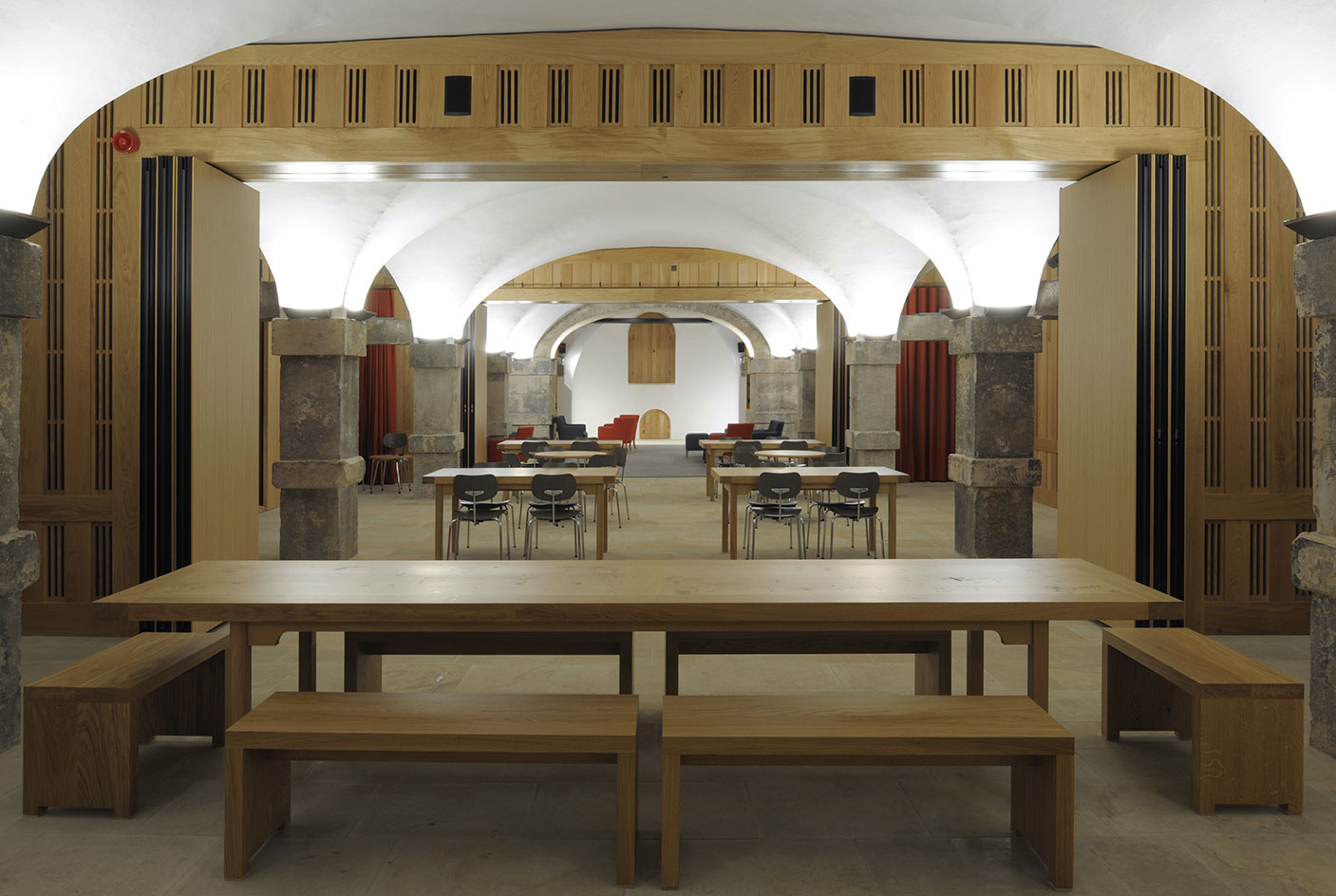
Christ Church Spitalfields, widely regarded as the masterpiece of English Baroque architect Nicholas Hawksmoor, is opening its crypt to the public for the first time in its some 300 year history. Funded by the Monument Trust and sensitively refurbished by Dow Jones Architects, the space now encompasses a new café, gallery and performance space. Works to the crypt follow the restoration of the nave in 2003 and the Baroque organ in June this year, completing a three-phase redevelopment of the grade I listed building.
The design ambition was to support activities in the nave with the ability to operate independently for venue hire. Three bold gestures define the remodelled crypt; a grand entrance ramp, the creation of a flexible open-plan environment and the insertion of timber volumes to accommodate support facilities. Hawksmoor envisaged the west elevation as an arched gateway to the city, representing the connection between centre and edge. Embracing this notion, Dow Jones conceived the entrance ramp as a continuation of the street, connecting the buried crypt to the city. Fashioned in York stone with metal railings, the ramp references the familiar features of the London streetscape.
Historically, the crypt had been subdivided in a piecemeal manner. Now, non-structural elements are stripped out, revealing Hawksmoor’s magnificent vaulted structure. The Portland stone columns have been restored to their original state and lime render to the brick vaulted soffits replaces a tired plaster finish, unifying the spacious interior with a bright undulating soffit. Daylight and ventilation are capitalized from perimeter clerestory windows, augmented by new lighting and mechanical systems.
The crisp appearance of the lightweight timber walls inserted between the heavy stone structure, creates a clear dialogue between old and new. Housing the ancillary spaces and concealing service routes, the unvarnished oak elements play an understated role, allowing the newly formed views of Hawksmoor’s impressive architecture to take centre stage.
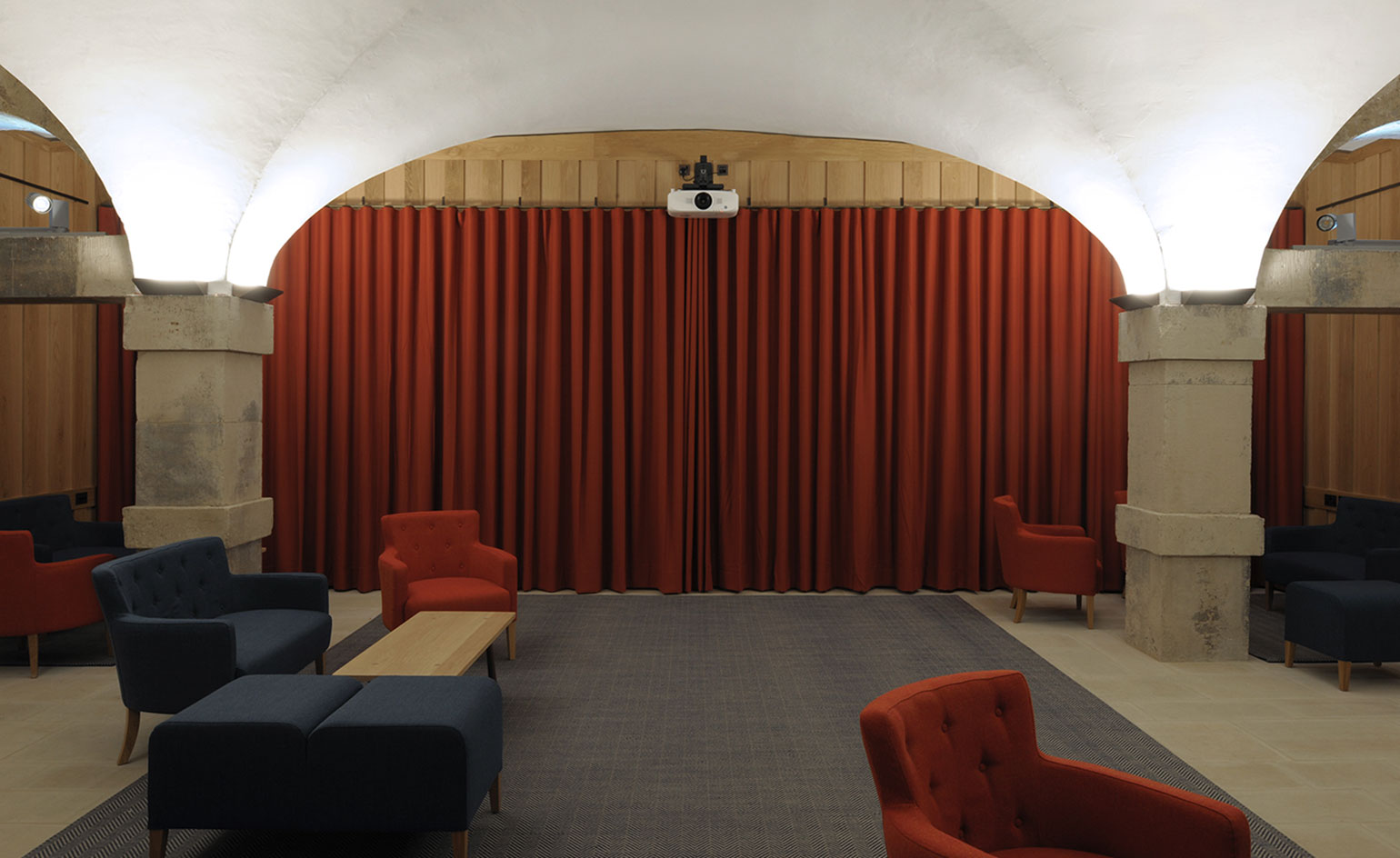
Built in 1729, the crypt now opens to the public for the first time in its 300 year history with a new café, performance space and gallery
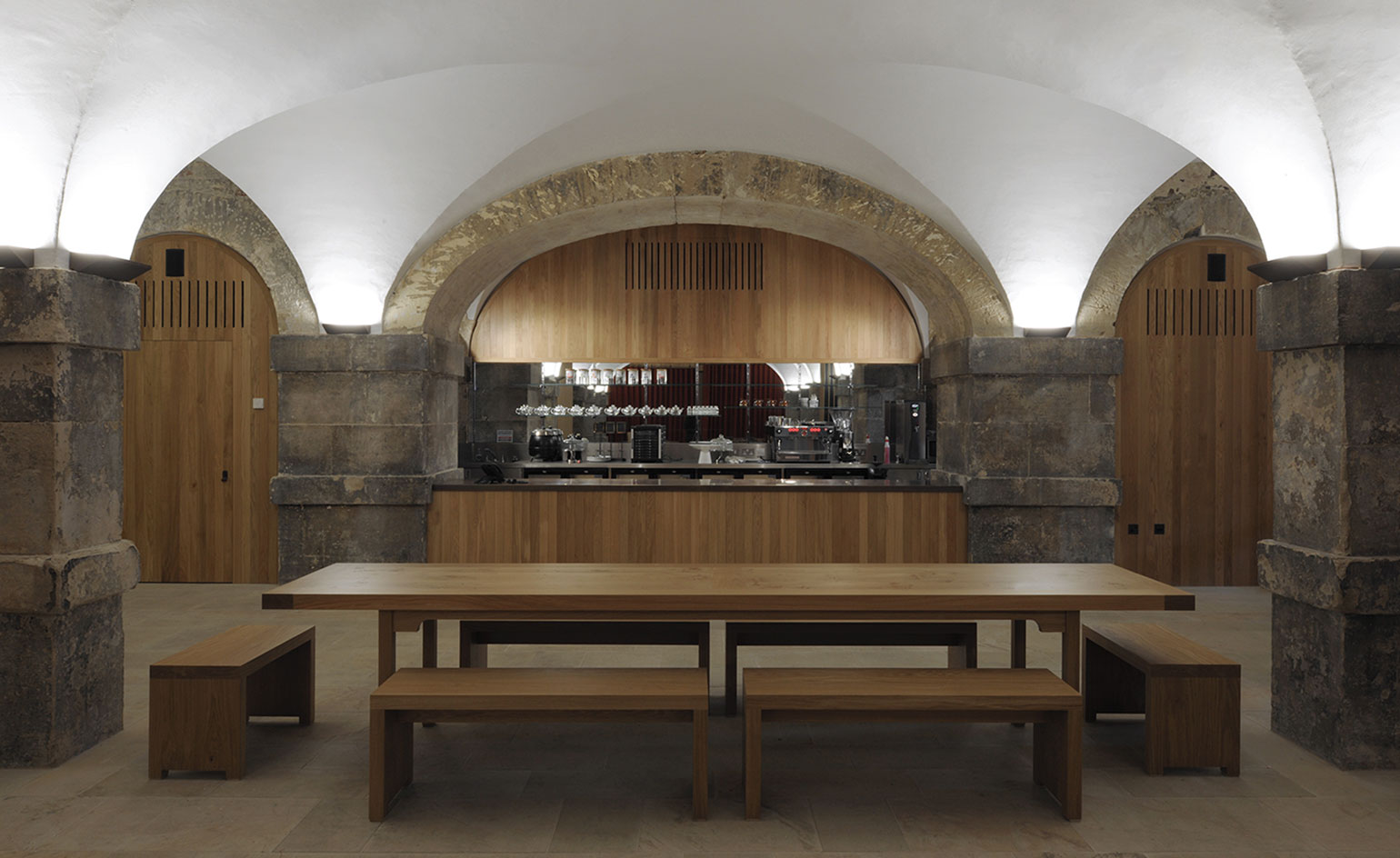
The design intent was to feel connected to but separate from the nave, offering the option for the space to operate independently. As part of the church’s sustainable business plan, both the nave and crypt can be hired out. The new catering kitchen and café provides the flexibility to service dinners for up to 250 and receptions for up to 600 people
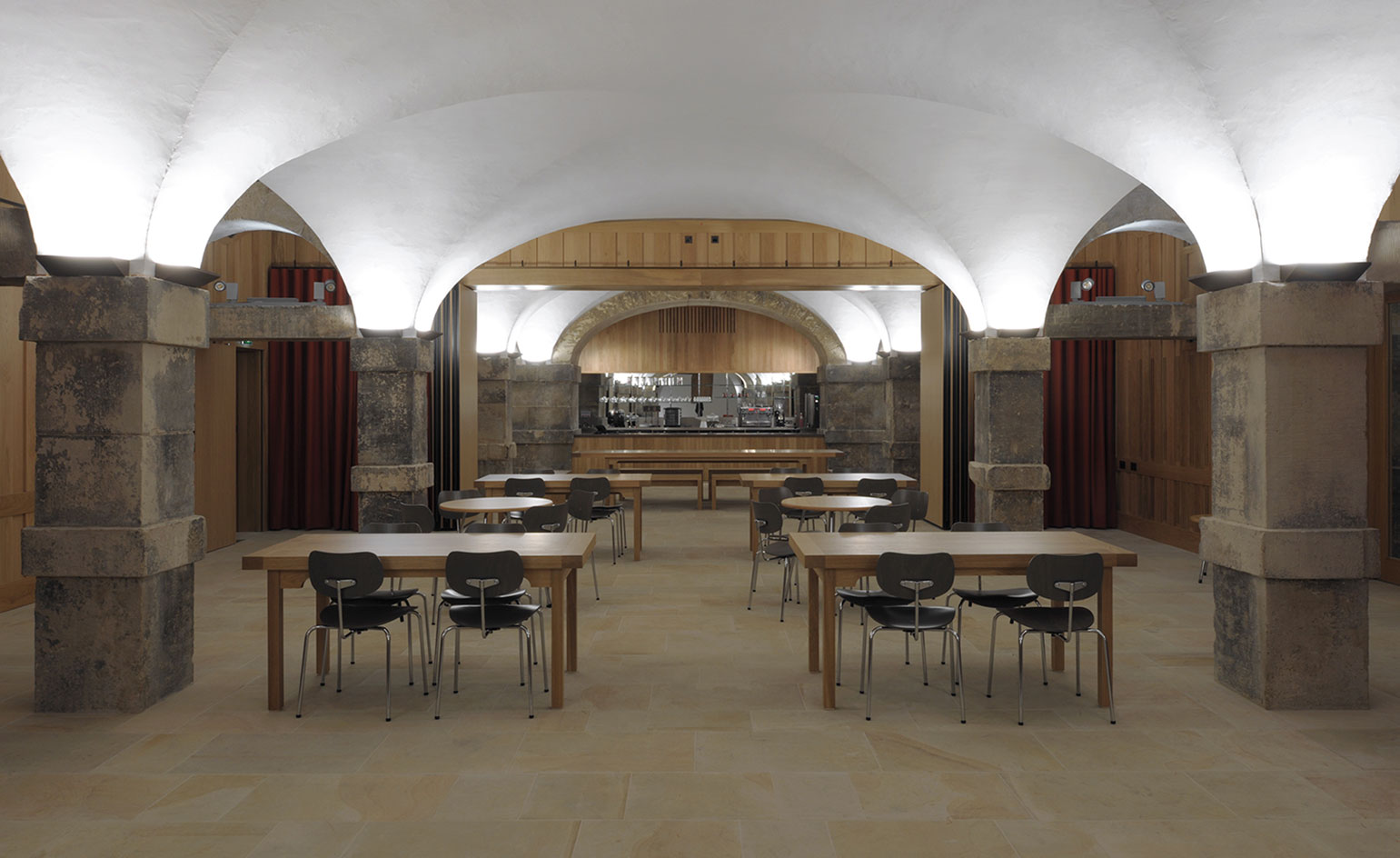
The restoration works stripped out blockwork walls and redundant services installed over the years, creating open-plan spaces and revealing Hawksmoor’s vaulted structure
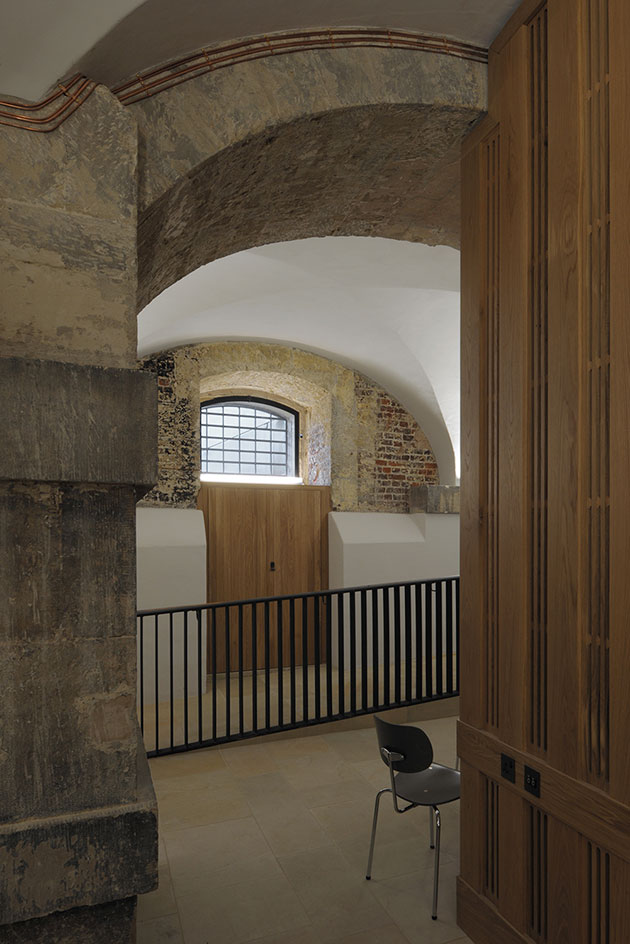
The underground crypt capitalizes on natural daylight and ventilation from perimeter clerestory windows, augmented by new lighting and mechanical systems, discreetly incorporated into the design of the timber panelled walls
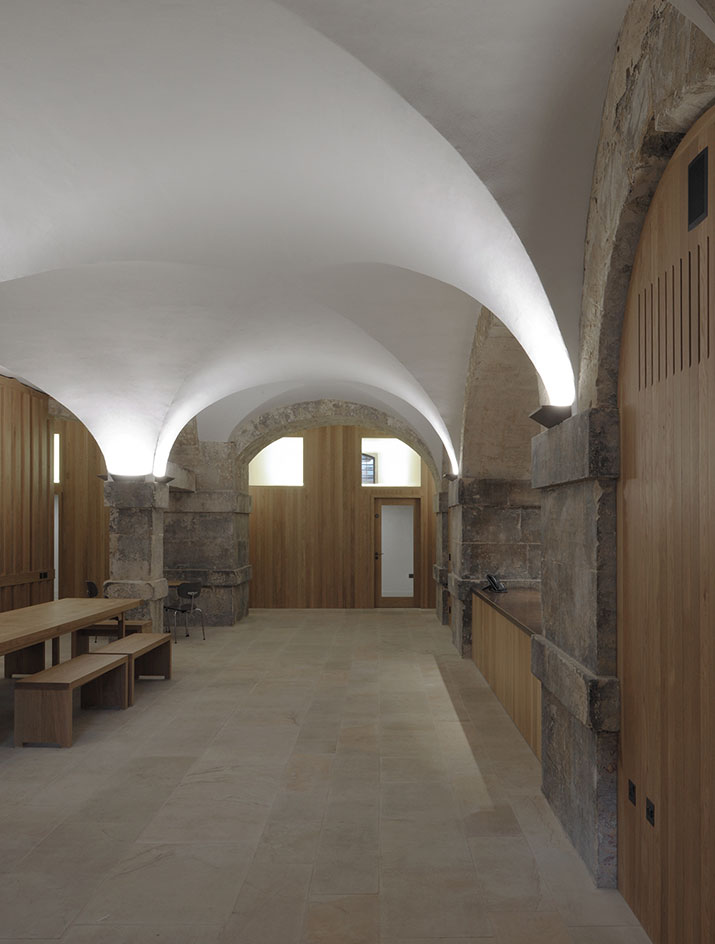
Support facilities including wc's, kitchen and servery counters are housed in complimentary timber interventions inserted between structural bays. A distinction is created by the timber panelling, with primary spaces lined in a plank and muntin staggered board style, and back of house areas lined in tongue and grooved boards
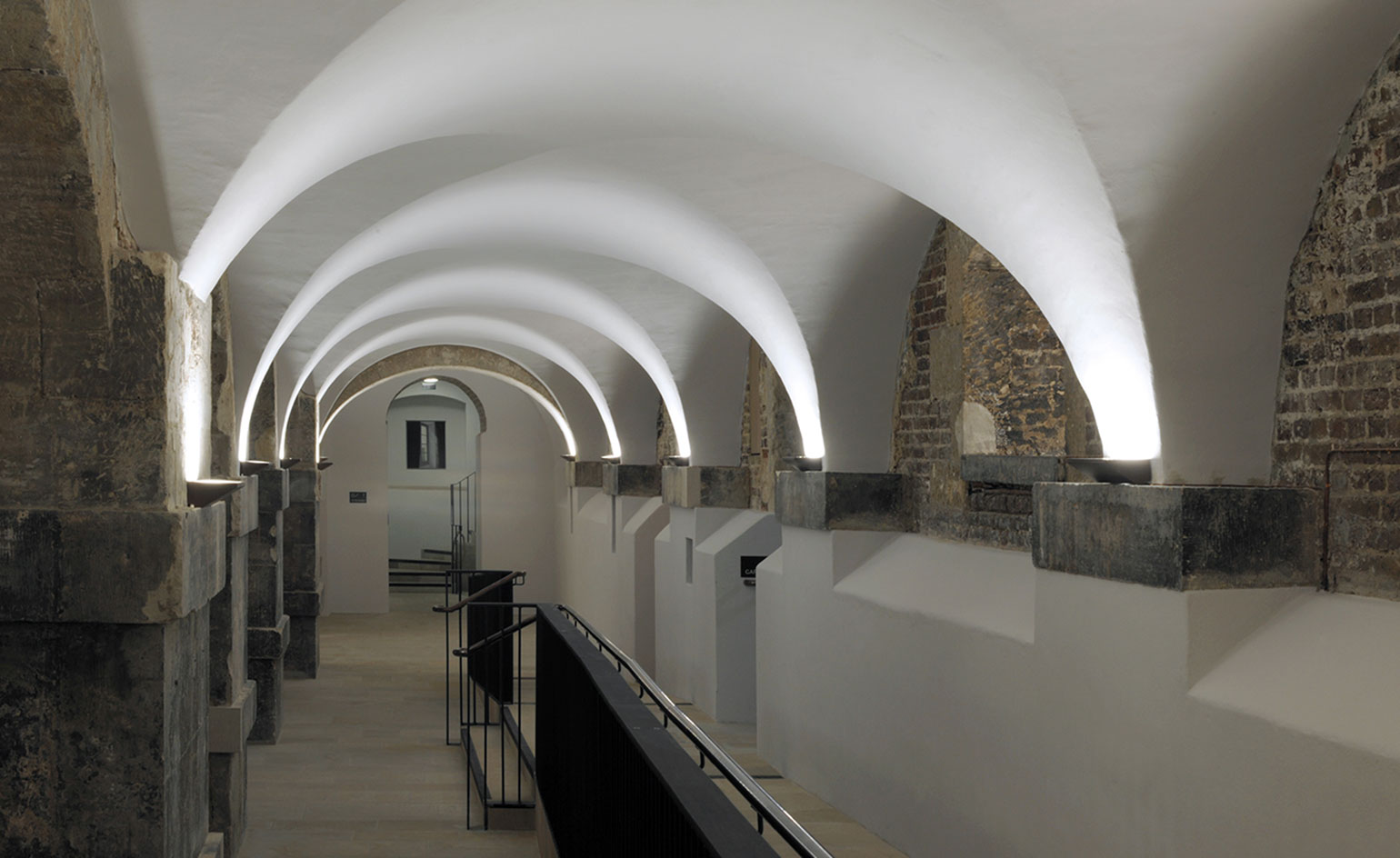
Hawksmoor envisaged the west elevation as an arched gateway, representing the connection between centre and edge. Dow Jones embraced this notion, conceiving the York stone topography and metal railing of the entrance ramp as a continuation of the street into the crypt
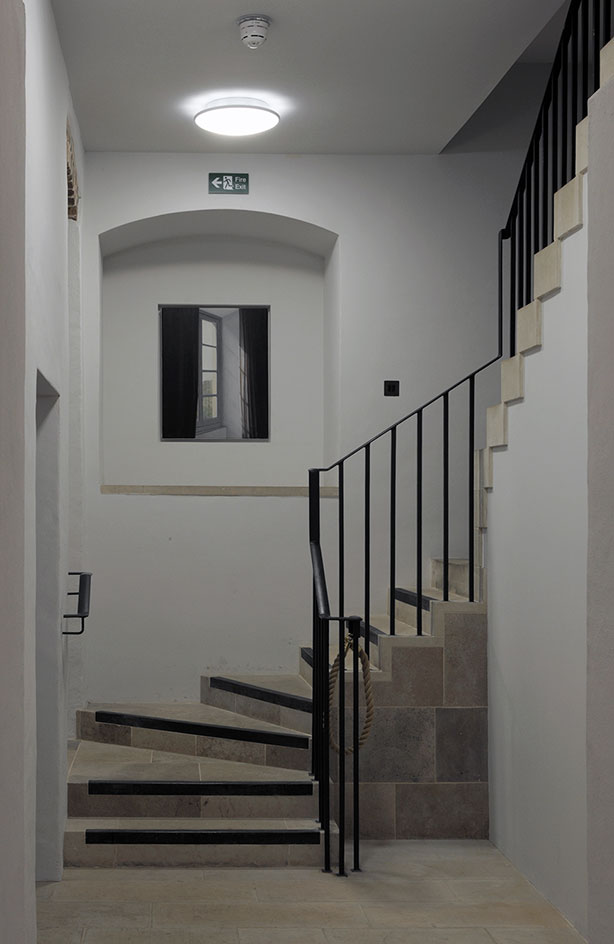
The metal balustrade references the language of the London streetscape. Finer elements including handrails, ironmongery, signage and light fittings are formed in bronze

The brick vaults of the entrance vestibule had never been plastered and for this reason are left in their original state. The oak insertions are detailed to incorporate service routes, integrating air supply, acoustic attenuation, lighting and AV
INFORMATION
Receive our daily digest of inspiration, escapism and design stories from around the world direct to your inbox.
For more information on Dow Jones Architects visit the website
Photography: David Grandorge
-
 The Bombardier Global 8000 flies faster and higher to make the most of your time in the air
The Bombardier Global 8000 flies faster and higher to make the most of your time in the airA wellness machine with wings: Bombardier’s new Global 8000 isn’t quite a spa in the sky, but the Canadian manufacturer reckons its flagship business jet will give your health a boost
-
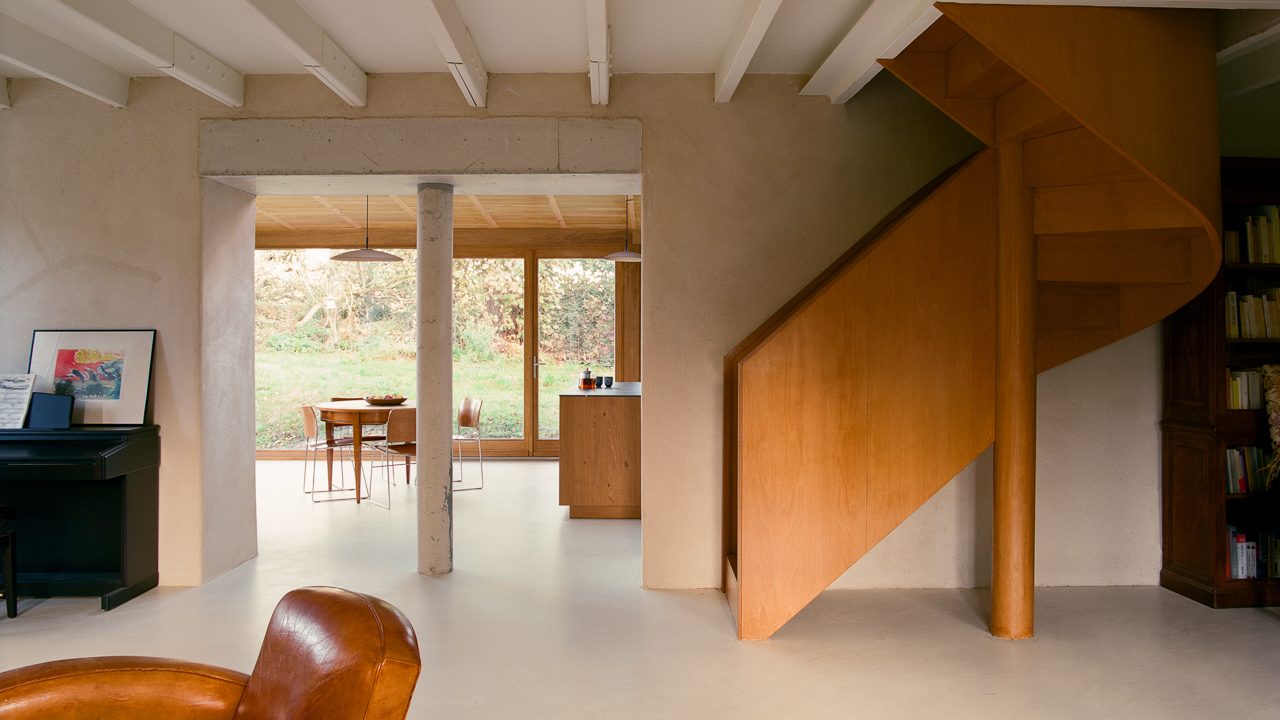 A former fisherman’s cottage in Brittany is transformed by a new timber extension
A former fisherman’s cottage in Brittany is transformed by a new timber extensionParis-based architects A-platz have woven new elements into the stone fabric of this traditional Breton cottage
-
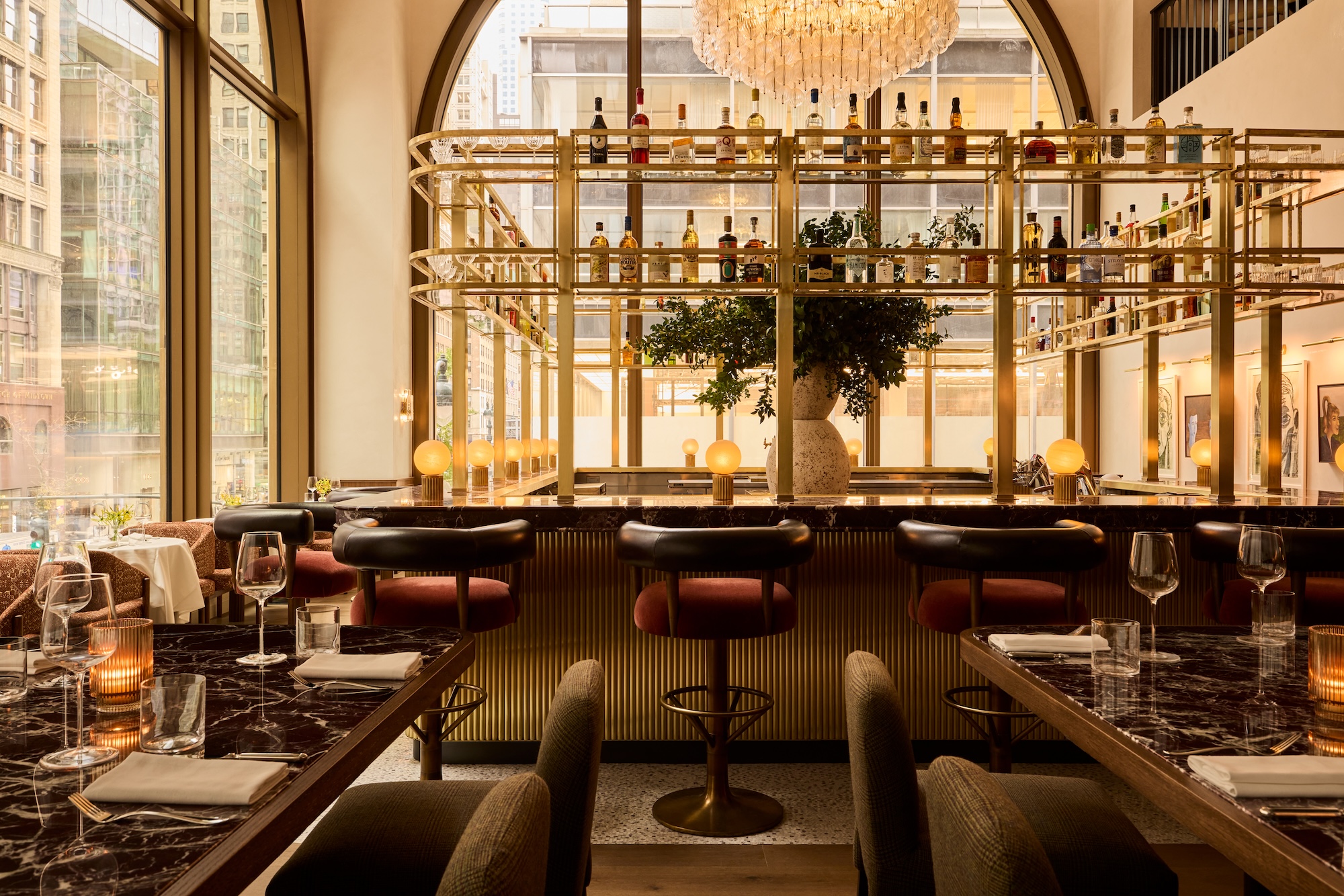 New York's members-only boom shows no sign of stopping – and it's about to get even more niche
New York's members-only boom shows no sign of stopping – and it's about to get even more nicheFrom bathing clubs to listening bars, gatekeeping is back in a big way. Here's what's driving the wave of exclusivity
-
 Arbour House is a north London home that lies low but punches high
Arbour House is a north London home that lies low but punches highArbour House by Andrei Saltykov is a low-lying Crouch End home with a striking roof structure that sets it apart
-
 A former agricultural building is transformed into a minimal rural home by Bindloss Dawes
A former agricultural building is transformed into a minimal rural home by Bindloss DawesZero-carbon design meets adaptive re-use in the Tractor Shed, a stripped-back house in a country village by Somerset architects Bindloss Dawes
-
 RIBA House of the Year 2025 is a ‘rare mixture of sensitivity and boldness’
RIBA House of the Year 2025 is a ‘rare mixture of sensitivity and boldness’Topping the list of seven shortlisted homes, Izat Arundell’s Hebridean self-build – named Caochan na Creige – is announced as the RIBA House of the Year 2025
-
 In addition to brutalist buildings, Alison Smithson designed some of the most creative Christmas cards we've seen
In addition to brutalist buildings, Alison Smithson designed some of the most creative Christmas cards we've seenThe architect’s collection of season’s greetings is on show at the Roca London Gallery, just in time for the holidays
-
 In South Wales, a remote coastal farmhouse flaunts its modern revamp, primed for hosting
In South Wales, a remote coastal farmhouse flaunts its modern revamp, primed for hostingA farmhouse perched on the Gower Peninsula, Delfyd Farm reveals its ground-floor refresh by architecture studio Rural Office, which created a cosy home with breathtaking views
-
 A revived public space in Aberdeen is named Scotland’s building of the year
A revived public space in Aberdeen is named Scotland’s building of the yearAberdeen's Union Terrace Gardens by Stallan-Brand Architecture + Design and LDA Design wins the 2025 Andrew Doolan Best Building in Scotland Award
-
 A refreshed 1950s apartment in East London allows for moments of discovery
A refreshed 1950s apartment in East London allows for moments of discoveryWith this 1950s apartment redesign, London-based architects Studio Naama wanted to create a residence which reflects the fun and individual nature of the clients
-
 In this Cotswolds home, drama meets minimalism
In this Cotswolds home, drama meets minimalismCotswolds home Hiaven house, with interiors designed by McLaren Excell, is a perfect blend of contemporary chic and calm, countryside drama